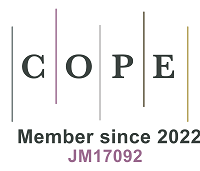Volume 4, Issue 1 (March, 2025) – 8 articles
Cover Picture: Polycyclic aromatic hydrocarbons (PAHs) are widespread in the atmosphere and pose significant health risks. While China’s Clean Air Actions have effectively reduced atmospheric PAH concentrations, the effects of these measures on health risks associated with PAH exposure remain unclear. This study analyzed the temporal trends in the health risks of 15 PAHs in Harbin, China, from June 2014 to May 2019, focusing on benzo[a]pyrene toxicity equivalents (BaPeq) and cancer risks (CR). Over five years, the concentrations of total, particle, and gas-phase ΣBaPeq decreased, with halving times of 3.80 ± 1.34, 3.80 ± 1.34, and 2.71 ± 2.67 years, respectively. Unlike the steady decline in total PAH concentrations, BaPeq showed an increase followed by a peak in the third year before decreasing. CR values for inhalation and dermal exposure also declined but remained above the safety threshold of 1 × 10-6 for all age groups, indicating potential cancer risks. Multiple linear regression showed only 38% of BaPeq reduction was due to emissions control, compared to 65% for total PAHs, as highly toxic PAHs were less affected. These findings emphasize the need for targeted actions on highly toxic PAHs in the future.
view this paper 







